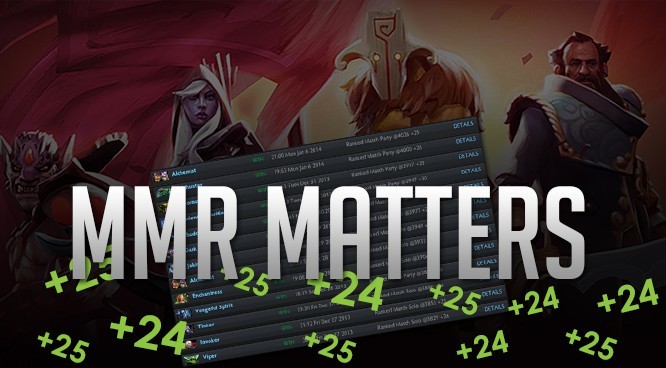
Top of the Board – How the MMR leaderboards shaped the Dota 2 landscape
The majority of Dota2's playerbase sits somewhere in the middle of the ranked matchmaking pack.

Source: https://dota.rgp.io/mmr/
Given this context, a there has been a fair amount of discussion on MMR and whether the ability to grind out pub games at decently high tier counts for squat. While this wasn’t the norm earlier, latest trends in the competitive scene has shaped the criterion on which players are judged. Glorification of solo skills and individual players will always be a factor in any sport but Dota 2 was relatively untouched by this. Yes we spoke of Dendi, but we spoke of Na'Vi with similar ado. Burning was put up on a pedestal, but so was DK. Even when someone broke into the scene, it was still the team that was spoken of first. But with wild roster changes in the competitive scene, teams began to pick up pubstars and leaderboard players and found immediate success by achieving a right balance of raw skill, experience, composure and understanding. Most notable among the lot is without a doubt Amer ‘Miracle’ Barqawi, whose highlight worthy plays and moments of pure magic have propelled him to the status of a Dota legend.

credits: cyber.sports.ru
Does higher MMR = better player?
The question that still persists is how much credibility is given to a player on the basis of solo mmr alone and that is one we hope to answer in this article.
- MMR shows dedication and a never give up attitude – because solo queuing can be frustrating and tilting and being able to grind out game after game is very commendable.
- You’ll notice a skill gap between someone who is 5k and someone who is 6k, but it may not be so clear cut between a 7.2k and a 8k+ player.
- It gives you a tremendous amount of experience and an uncanny drive to win – Dota has so many variables and permutations that you are bound to be exposed to greater depths and newer playstyles while playing. By playing more and more, not only can you eliminate some of the variables to a certain extent you also develop ways to interpret, analyze and tackle situations.
- It is almost impossible to achieve high mmr without some form of research, analysis, self study and peer study; qualities which are absolutely mandatory at a competitive level.
- It gives you visibility and exposure among spectators as well as other players watching the game. This in turn builds brand value, thus increasing your chances of getting noticed.

credit:gamersbook
What MMR will never be able to reflect
It is also important to keep in mind, that MMR rarely tells the full story and at a competitive level, no one will judge you on the basis of mmr alone. At that stage many factors will come into play.
- Your ability to communicate – both inside and outside the game. Team dynamics is something people tend to overlook.
- Ability to adapt to the meta and playstyle that best suits the team and not just you.
- Hero pool and playstyle diversity. While increasing mmr is generally achieved by spamming heroes, it is actually detrimental in that sense. However one can also make the argument that reaching the HS or VHS bracket requires so many games across so many meta’s that’s one develops a large hero pool naturally. But there are players (remember Badman?) known for spamming heroes to reach high tiers but these players are not likely to find success.
- The ability to work within a system. Solo queue and pro matches will rarely provide anything similar. Most teams will have a system within which they operate and one must be flexible enough to fit into this.
- While MMR can be achieved with enough hours and enough dedication, some of the skills that are required to actually go pro can never be learnt or taught. Subtle, intuitive learnings that only come from years of tournament experience can never be replaced by queing up for thousands of matchmaking games.
The Big Question
In the current scheme of things, if you’re looking to go pro, MMR is one of the crucial factors that you will be judged on. Unless you can make a team, go from Open Quals to Regionals and shock the hell out of the scene, chances of getting picked up and noticed are negligible. Since visibility and exposure below 7k is fairly low if you’re an unknown, it is actually pretty important to hit that 7k mark. With rising competition and increasing prizepools, contacts and networks are equally important and playing regularly at a high tier can open doors for you which might be crucial in the larger scheme of things.
Crowley believes that consistently playing and showcasing your skills in a game which is bound to have spectators can be the key to opening new doors. In our chat with the upcoming SEA squad GeekFAM - their captain Syeonix mentioned that one should only consider going pro after a crossing threshold mmr. (6k for supports and 7k for cores was the benchmark he set), but that could vary depending on region and average mmr among peers.

A lot of people have different notions about mmr and its relevance. For example there’s an entire discussion about solo and party mmr that we have not addressed. Ah well, maybe another time.
